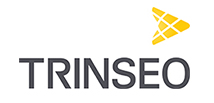Flourishing in the Hybrid Work Model
 The post-COVID workforce has turned hybrid. Some employees have gone fully remote or in the office, but most are a mix of both which results in a whole new set of complications for employers and employees.
The post-COVID workforce has turned hybrid. Some employees have gone fully remote or in the office, but most are a mix of both which results in a whole new set of complications for employers and employees.
What is a Hybrid Work Model?
A hybrid work model is a mix of in-office and remote work. This new workstyle can be disruptive for everyone in the company and adapting to this change requires effort from everyone.
Potential Fall Out
Employers who are requiring employees be back in the office full-time are facing all sorts of issues.
Neuroscience research has shown us that our brains love predictability so we humans love our routines. We work to create routines in as many areas of life as possible, and work is no different. Over the life of the pandemic, employees have grown accustomed to setting up their own work at home routines to fit their personal needs.
And those that are being asked to return to the office full time are struggling to adjust to this request. Their routine is being disrupted as working from home and working in the office are two completely different routines.
Some of those organizations that are requiring people to be in the office full time are experiencing an unexpected back lash to their request. Many workers are resigning their current work situations, often without another job to go to, to avoid working in an organization that doesn’t accommodate their personal needs.
Solutions
There are some legitimate reasons to have people work at the office. Things that occur naturally when working face to face that are lost when working remotely. Ad hoc water cooler conversations and casual chats about one’s colleague’s families or who won the “big game” don’t occur as frequently on virtual meetings. And of course, it’s easier to just walk down the hall for a quick answer to a question.
Sustaining Connection: The goal should be to keep employees engaged while working remotely and encourage them to come into the office more often. Drawing again from neuroscience research, we know our brain craves connection and collaboration. And when working remotely, this need can go unmet.
Offer in-office events such as weekly lunches to improve company culture. Employees will come to the office to socialize for an hour, then end up working from there for the day. Identify ways to keep connection occurring for the team. Spend a few minutes in the beginning of each Zoom or MS Teams meeting to catch up on a personal level.
Make sure working agreements have been established that the team agrees to. For example, committing to respond to someone’s request within a 12 hour time period or ensuring that team members are available during normal working hours will do wonders to build connection and trust among the team. Read more about keeping employees engaged in this blog.
Managing Performance: Employers need to trust that their employees will get the work done that needs to be done. No one likes being micromanaged. Leaders need to clearly communicate their expectations and confirm that employees clearly understand them. Make sure they understanding that they need to be accessible to their colleagues. Then give employees the space and trust to perform their work. Employees will feel valued and appreciated, which will lead to quality work performance. Harvard Business School Professor Tsedal Neeley says, “You have to trust that they are intelligent enough and well-intentioned enough to get work done no matter what it takes.”
Managing Work-Life Balance: Leaders need to check in with employees to make sure that their work-life is balanced. Normalize asking employees how they are doing and pay attention to the answer. When employers genuinely care about their employees, it improves the company culture and gives employees the space to be honest about their work and personal life.
Leaders that are demanding that everyone be physically present in the office might need to re-examine the key purposes of having all working in the office full time. Are they being driven by their own insecurities about how to manage employees performance remotely? If they aren’t careful, employees will push back as they feel the lack of trusted and disrespect. Ultimately this leads to less productivity and a decreased desire to produce quality work.
The hybrid work model is something that everyone in the company needs to get used to because it is here to stay. Work out these complications now so everyone can get back to work “as usual.”
About Transformation Strategies
Founded by Tricia Steege in 2001, Transformation Strategies is a trusted consulting firm that assists our clients to realize their desired futures by partnering with them to create comprehensive change strategies and implementation plans that accomplish real results. We specialize in shifting whole systems at one time by helping our clients think the way the whole system thinks. Contact us today to get started.






